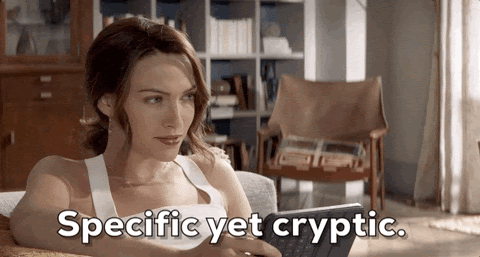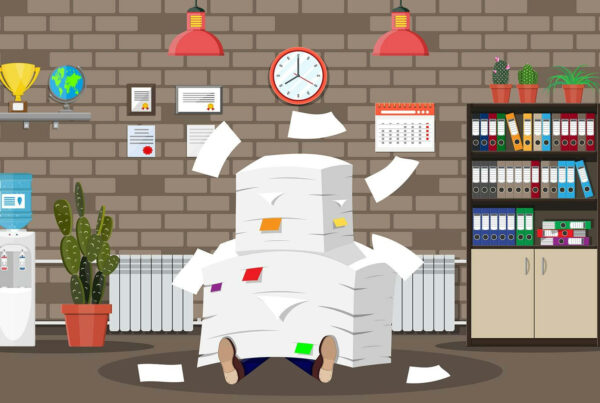There’s nothing quite like spending hours perfecting design concepts only to have the client casually knock them all down like a stack of poorly placed Jenga blocks. It sucks because you thought all three options were solid, and one of them was a full-on masterpiece.
We’ve all been there. But when you’re a freelancer or agency owner, handling these moments with grace (and without flipping a table) is part of the gig.
If a client says, “I don’t like ANY of these designs,” don’t panic. With the right approach, you can get the project back on track. Let’s dive into how to avoid the dreaded “I don’t like ANY of these” feedback in the first place, and what to do when it happens despite your best efforts to avoid it.
 Always Start with Mood Boards, People!
Always Start with Mood Boards, People!
The best way to avoid design rejection is to make sure you and the client are speaking the same visual language before you start designing. And no, just saying “modern and clean” isn’t enough. What you think is modern and clean might not be what your client is envisioning.
That’s where mood boards come in. Take some time upfront to pull together example designs—not your own work, but examples from elsewhere. Present a few different styles and ask the client what they like and don’t like.
- Do they like bold colors or soft tones?
- Are they into sharp lines or organic shapes?
- Does Helvetica make their heart sing, or are they more of a Futura fan?
Pay attention to the words they use to describe the design examples and jot down some notes:
- “Logo example 3 was described as ‘Punchy.’”
- “Logo example 7 was described as ‘Horsey.’”
- “Logo example 9 was called a ‘Shite Show.’”
- “Logo example 12 was called a “Humdinger.”
This will help you learn to speak their language when it comes to feedback on your own designs. AND because you didn’t actually design any of the examples you’re showing during mood boards, it doesn’t matter if they say, “These all suck,” because you can just reply, “Let me find some more examples for us to look at.” No emotion necessary.
Advice: Don’t skip the mood boards… EVER. Even if it isn’t a “formal” mood board delivery, at least grab some design examples and throw them into an email to tell the client, “This is the general style I’m planning to pursue with your design project. Do these design examples align with the style you’re envisioning?” (Consider this the Mood Board Minimum.)
Don’t Just Email and Hope, Present the Work
You feel like you got good direction from the mood boards. The client is still excited. You’re still excited. Let’s do this!
You polish up three amazing design comps to discuss with the client. Two of them are great, and one of them you feel is a total slam-dunk. You’re ready to show the client.
Step One: Schedule the Design Presentation
Schedule a meeting to present your work to clients whenever possible, especially during the first comps delivery. Don’t hide behind an email. Put on your grown-up pants and present your work.
Step Two: Remind the Client of Mood Boards and Rounds
During your scheduled presentation meeting, before you show any design work to the client, do the following:
- Show them the mood boards: “Before we show you the designs we created, let’s take a look back at the mood boards.” (Don’t spend a lot of time on this—just refresh their memory on the design direction you were pursuing.)
- Then remind them of the rounds: “As a reminder, we have three rounds of design in this project. This is round one. Sometimes we nail it fast, and sometimes we will use all the rounds. This is a collaboration.”
These reminders are important. If the client pushes back on the work, you’ll fall back on these two reminders.
The Client Doesn’t Like Any of the Designs
You walk the client through the work. You highlight the design thinking that went into each option. They are dead silent throughout. A cold bead of sweat drips down your forehead. “What are they thinking? Is this a good sign or bad?”
Finally, the client responds, “To be honest, I don’t like ANY of these designs.”
The world starts spinning. Your anxiety begins to rage into a full-on panic attack, but you try hard not to let it show on your face.
Compose yourself and fall back on the reminders with this script:
“No problem. This happens sometimes. As a reminder, this is Round 1 of three rounds included in the project. We are confident we will get there. Let’s pull up the mood boards and discuss the specific things you liked about the mood board examples that you don’t see present in the designs we presented.”
Specific things.
 Don’t let them get away with blanket statements like, “I don’t like ANY of these.” Get them to talk about specifics.
Don’t let them get away with blanket statements like, “I don’t like ANY of these.” Get them to talk about specifics.
“To make sure I fully understand, could you share what specific elements of the designs aren’t resonating with you? Is it the colors, fonts, or layout? Also, are there any aspects that you do like, or that feel closer to what you had in mind? The more specifics we can narrow down, the easier it’ll be for us to adjust things in the next round. It’s also critical to keep in mind that it isn’t just about what you like and dislike, it’s about what will work best for your target audience. So let’s discuss that as we review the details.”
Go Back to Mood Boards If Necessary
During your comparison between the approved mood boards and the designs you just presented, you may find that the problem was NOT in your work, but in the design direction altogether. Sure, the client once said, “Let’s pursue the style in mood board option 1,” but now it doesn’t seem like they actually like that style.
When this happens, go back to mood boards. Don’t waste your design time trying to “design guess” what the client may like—present new mood boards that capture the new style your client discussed. It’s better to spend time on new mood boards than it is to do a whole new round of “guessing designs” that they still won’t like.
TL;DR (The Bullet Point Breakdown)
- “I don’t like ANY of the designs,” is NOT constructive feedback.
- Don’t let your client get away with it.
- Force them to discuss specific.
- Use mood boards for unemotional design conversations (don’t skip them, ever).
- And always remind them that design is a collaborative process that extends over a few rounds of feedback.
- Oh, and don’t forget to take your anxiety meds before each meeting. Haha. JK…kinda…but actually probably not JK.












